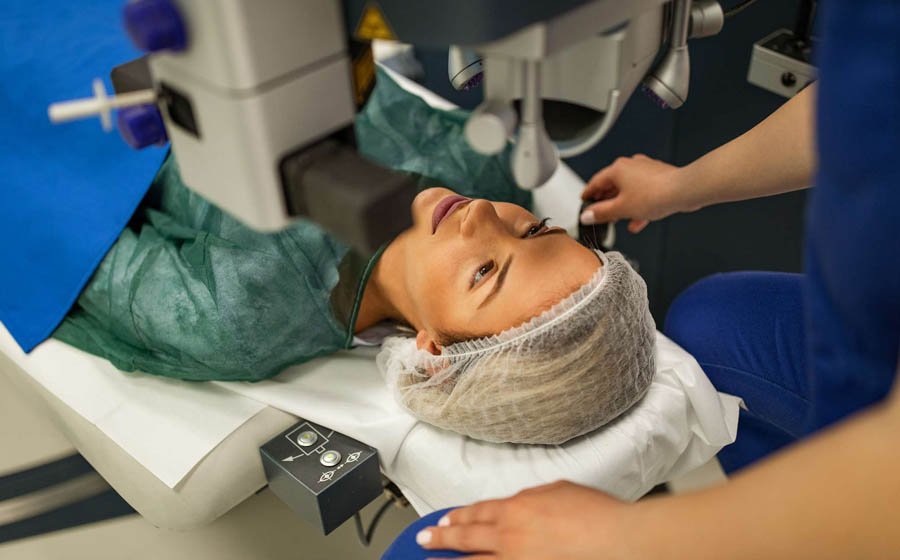LASIK and cataract surgery are popular eye procedures that treat common eye problems. These two procedures have a few similarities but are separate procedures. Those who seek treatment for different eye problems may confuse them. Here are the differences between these two eye treatment procedures:
Similarities
Cataract and laser-assisted in situ keratomileusis (LASIK) surgery both use laser technology for eye and vision repair. In all-laser LASIK, the corneal flap is made using a femtosecond laser, and an excimer laser alters the cornea’s shape. During cataract extraction, the doctor uses a femtosecond laser to remove the natural lens from the eye.
Both surgeries boast an impressive success rate. Many patients report improved vision of at least 20/20 following the operation by a certified professional.
Specially trained ophthalmologists will perform both procedures while the patient is awake. They will use a local anesthetic to numb the patient from any pain during the process. Cataract and LASIK surgeries are quick procedures that require a short recovery period.
Differences
There are many differences between laser-assisted in situ keratomileusis (LASIK) and cataract or lens replacement surgery. These treatments serve different purposes and are carried out in different ways.
Conditions They Treat
LASIK surgery, sometimes referred to as refractive surgery, aims to treat vision length issues such as:
- Myopia (Nearsightedness)
- Hyperopia (Farsightedness)
- Astigmatism (Imperfection in the eyes’ curvature that causes burry far or near vision)
Refractive surgery corrects how light is focused on the retina by reshaping the cornea.
Ophthalmologists perform lens replacement surgery on a patient with eye cataracts. Cataracts cloud the natural lens of the eye, causing blurred vision. The surgery helps improve vision by replacing the natural lens with an artificial one.
Treatment Procedure
Cataract and LASIK surgery procedures differ because they aim to correct different eye problems. Here is what to expect during each process:
Cataract Removal Procedure
The surgeon first prepares the eye during cataract surgery by applying local anesthetic and pupil-dilating eye drops. Surgeons will remove the clouded lens using an ultrasound probe or an incision.
After removing the natural lens, the eye surgeon replaces it with an intraocular lens (IOL). IOL is an artificial lens created to be as clear as your natural lens.
LASIK Procedure
During LASIK treatment, the eye surgeon will use topical eye drops to numb the patient’s eyes. Surgeons then make a corneal flap using a femtosecond laser and use another laser to reshape the cornea.
The surgeon then will lift the corneal flap, allowing a second laser to reshape the cornea. A computer-controlled laser is calibrated for a specific patient’s corneal map.
After reshaping, the ophthalmologist will return the corneal flap to its original position. The repositioning allows light rays to focus more accurately on the retina and improve eyesight.
Eyes per Surgery
Ophthalmologists perform LASIK on both eyes in the same session for balanced eyesight. For patients who require cataract removal surgery on both eyes, the eye surgeon will have to book different days for each eye.
Insurance Coverage
Insurance may not cover LASIK surgery, though a patient can usually pay for the procedure using a flexible savings account (FSA). Most insurances, such as Medicare, will pay for medically necessary cataract treatment, which involves inserting a basic intraocular lens.
Patients may have to pay out-of-pocket expenses if they choose a premium intraocular lens.
LASIK and Cataract Surgery Together
A doctor may perform both operations on the same eye because LASIK works on the cornea, while cataract removal is on the lens. A patient who had LASIK surgery to correct vision length when young may undergo lens replacement surgery on the same eye if they develop cataracts later.
The procedures can also be done simultaneously if an eye surgeon finds them necessary. After cataract removal surgery, the doctor may discover that the patient’s vision is still imperfect. In rare cases, they may offer LASIK surgery to complete the operation and provide the patient with 20/20 vision.
As IOL technology advances, the likelihood that lens replacement surgery will not completely repair the patient’s eyesight reduces.
Eye Surgeons Near You
Visit an eye surgeon near you to find out if you are a good candidate for LASIK or cataract surgery. The ophthalmologist will complete an eye exam and guide you through the best path to better vision.


